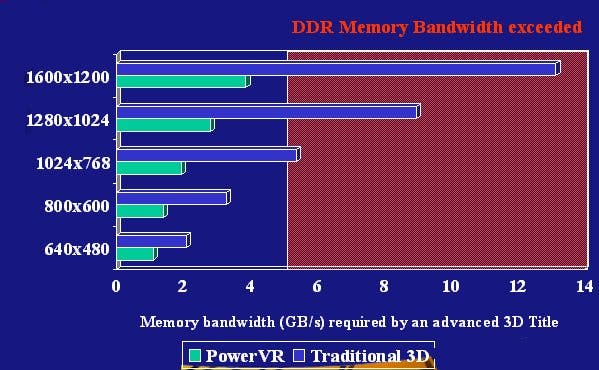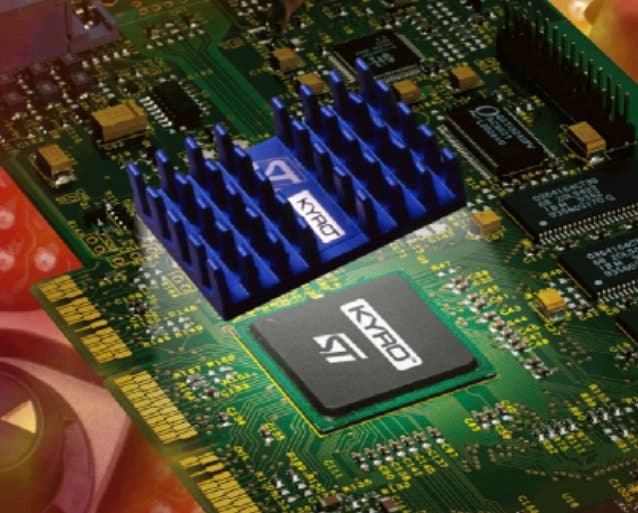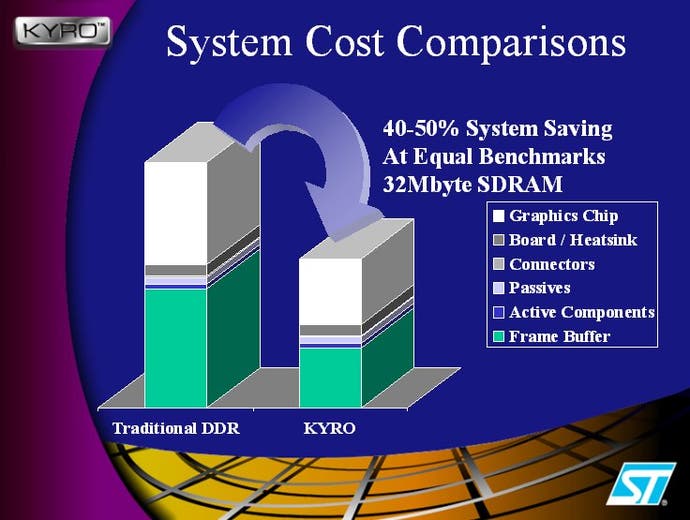Kyro 3D graphics card
New 3D graphics chip previewed
Think of 3D graphics chips, and those most likely to spring into your head are things like the GeForce and Voodoo. These are some of the real heavy-weights in the performance arena. There's one name though that usually gets forgotten about by most though - PowerVR. And there's a reason for that... The PowerVR technology has not been too impressive in its previous outings, and the question was, could PowerVR ever be quick enough to rival the big boys?
The PowerVR by nature lends itself to being a cheap chip to produce, which makes it attractive at the lower end of the market. Realistically though, the hardcore gamers are only interested in one thing - big numbers. With the recent announcement of PowerVR's latest incarnation, the Kyro3D, can we expect to see performance more befitting the "on paper" specifications?

Overdrawn?
The PowerVR architecture doesn't work in a conventional manner, as David Harold (top PR guy at Imagination Technology) will be sure to tell you, should you ever speak to him. Instead of wasting clock cycles in needless memory reads/writes, and eating up fill rate by drawing and texturing pixels which you won't ever see, PowerVR's architecture only draws the pixels that you can see.
This common problem of rendering hidden pixels is called overdraw. Conventional graphics cards try to overcome this problem by performing a "Z-sort", which eliminates some of the redundant information. But it isn't perfect, and still leaves substantial overdraw.
PowerVR chips utilise a farily hefty depth sorting algorithm, which creates a display list of what is actually going to reach your screen at the end of the day. In this way the need for a conventional Z-Buffer is eliminated. In creating this display list the scene information must be depth sorted which, as I am sure you can imagine, is quite some task, especially when you are asking for 60 frames per second or better. Despite this time consuming task, the chip is capable of rendering so quickly and efficiently by only drawing visible pixels as described in the display list that it more than makes up for it.

Bandwidth
Another key benefit of the Kyro is the bandwidth requirement between the chip and the memory. As NVIDIA's GeForce has recently demonstrated, the ability to quickly transfer information between the chip and the memory is essential, and so memory bandwidth becomes extremely important when trying to achieve very high fill rates.
The Kyro requires far less bandwidth in order to get the same job done. Whereas conventional chips perform many reads and writes between the memory and the chip in order to fully render a scene, because of its depth sorting the Kyro doesn't need to read and write as much, and as a result the requirement for memory bandwidth is greatly reduced.
So what about the fill rate then? The Kyro's specs have yet to be finalised exactly, which makes it hard to say for sure what the exact fill rate will be. From what I have seen we can expect to see the chip running at between 125 and 150MHz. With two texture pipelines this translates to a base fill rate of 250-300Mtexels/sec. I stress that this is base fill rate though, as thanks to overdraw Kyro will be able to achieve an effective fill rate that is substantially higher.
With the Neon250 they were touting an effective fill rate of 250Mtexels/sec, working on the idea of a depth complexity of 2 (in other words, it only needs to render half as many pixels to achieve the same effect as a normal graphics card). With increased detail in games, and therefore the need for more rendering passes, the average overdraw is now being listed as 3, which would give the Kyro an effective fill rate of 750-900Mtexels/sec. An impressive number I'm sure you will agree.
Of course, we have seen this kind of optimism in the past with previous generations of the technology, but from what I have seen it does like a little more promising this time round...

Bandwidth
Kyro has some other rather appealing features too, not least of which is support for Environment Mapped Bump Mapping, or EMBM for short. This was first pioneered by Matrox with their G400 chip, and it provides a very impressive effect. Unfortunately it wasn't widely used due to the lack of hardware support, but ith ATI's Radeon 256 and now the Kyro supporting this feature as well, we may now see more EMBM enhanced games.
Another feature that is worth noting is support for eight layer multi-texturing. Other chips make a claim to this feature, but the Kyro actually does it. The chip also runs at 32bit internally, which means that it should yield good 32bit colour peformance. Full Scene Anti Aliasing is also supported, and looks good enough to rival that of 3dfx's Voodoo 5. Technically the PowerVR architecture has supported this feature for some time, but now that it is becoming a major feature to have, Kyro is showing off its true potential.
On the memory front, Kyro can support up to 64Mb of SDRAM, and potentially even more. It is most likely that the majority of boards will sport the standard 32Mb though, not only to keep costs down, but also because Kyro doesn't see a huge benefit from the increased memory.

Bandwidth
I must say that the Kyro has impressed me a great deal, and it seems to be able to offer reasonable performance at a low price.
The tests we ran while at Imagination Technology (formerly Videologic) put the Kyro up against an SDR GeForce, and it was easy to see that the Kyro was staying comfortably ahead. I'm going to refrain from posting any actual numbers, as it wouldn't be fair to either card as I had no real control over the test systems, and the Kyro's drivers were not final. Suffice to say though, that for the price you are going to have to go a long way to beat the performance of the Kyro. Kyro will be one hell of a product, and while it probably won't break any speed records it will still be a real alternative to the usual NVIDIA and 3dfx products, particularly for people on a budget.
Another thing to remember is that Kyro represents a whole family of chips, and there will be more versions of it in future, offering even greater performance. ST Microelectronics, who are building the chip, are also committed to a much shorter design cycle in future, which means that we could potentially have two new chips from them before the year is out!
I can't help but give the Kyro a 'Caesar style' thumbs up recommendation. Obviously we are waiting for final boards and drivers, but as soon as we get them (and it will be very soon now) we will let you know. Stay tuned!



.png?width=291&height=164&fit=crop&quality=80&format=jpg&auto=webp)



